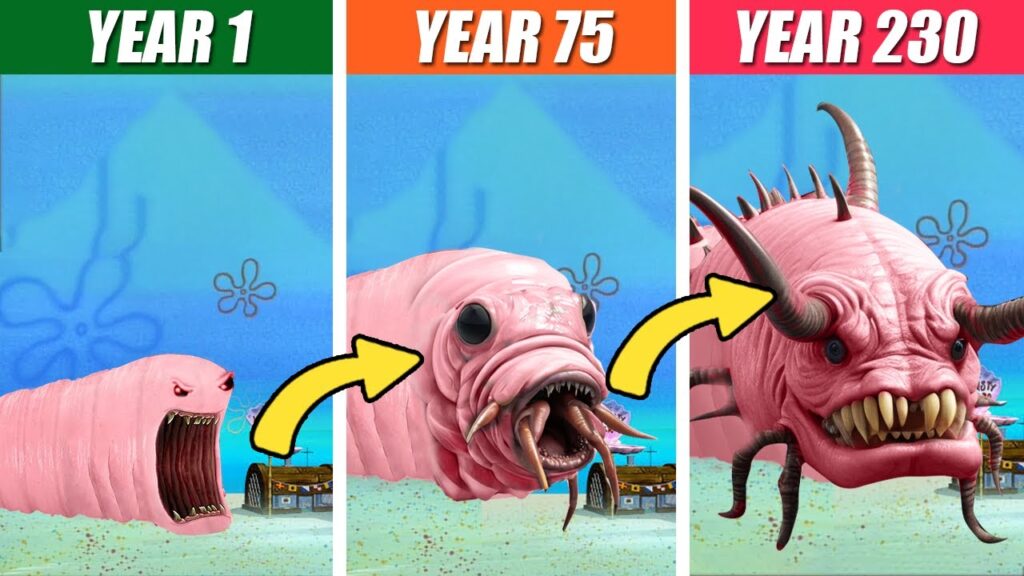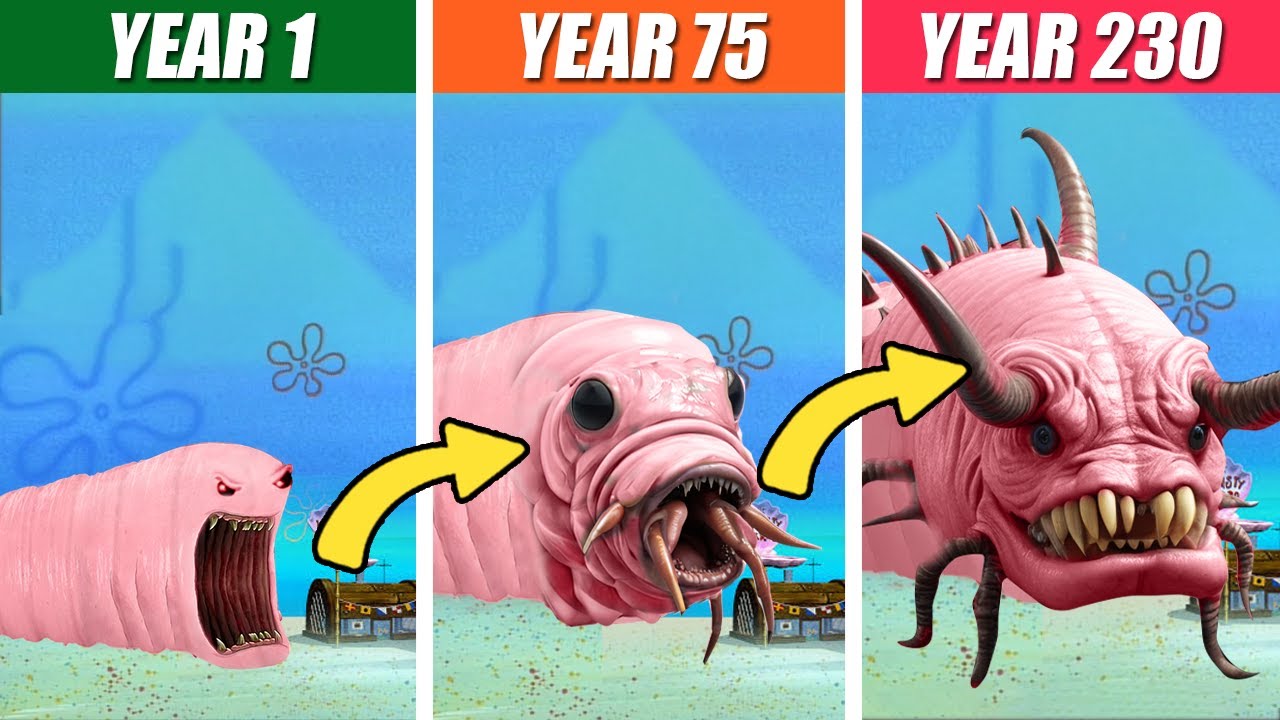
The Alaskan Bull Worm: Separating Myth from Reality in the Animal Kingdom
The Alaskan Bull Worm. The name itself conjures images of a colossal, terrifying creature lurking beneath the frozen tundra. Popularized by the animated series Spongebob Squarepants, the question remains: is the Alaskan Bull Worm a real animal, or purely a figment of cartoon imagination? This article delves into the fascinating world of worms, exploring the possibility of a real-life counterpart to the monstrous cartoon creation while examining the realities of invertebrate life in extreme environments. We’ll dissect the scientific plausibility of such a creature and explore the actual, albeit less sensational, worms that inhabit Alaska and similar regions.
The Mythical Alaskan Bull Worm: A Cultural Icon
Before diving into the science, it’s crucial to acknowledge the cultural impact of the Alaskan Bull Worm. The Spongebob Squarepants version is depicted as a gigantic, pink worm with a voracious appetite, capable of swallowing entire buildings and causing widespread panic. This exaggerated portrayal, while entertaining, sets a high bar for any real-world comparison. The sheer size and destructive capabilities of the cartoon worm are, frankly, biologically improbable. However, the fascination with large, mysterious creatures taps into a deep-seated human interest in the unknown and the potential for the extraordinary within the natural world.
What Does Science Say About Giant Worms?
The existence of truly gigantic worms is not entirely unprecedented. Several species of worms can reach impressive lengths. For example, the bootlace worm (Lineus longissimus) can grow to be one of the longest animals on Earth, with recorded specimens exceeding 100 feet in length. While not as thick or menacing as the cartoon Alaskan Bull Worm, the bootlace worm demonstrates that extreme length is possible within the annelid family. However, these worms are generally found in marine environments, not terrestrial ones like the fictional Alaskan landscape. The challenges of supporting a large body on land, particularly in a cold climate, present significant biological hurdles.
Challenges to Gigantism in Terrestrial Worms
Several factors limit the potential size of terrestrial worms. First, worms rely on diffusion through their skin for respiration. As size increases, the surface area-to-volume ratio decreases, making it increasingly difficult to obtain enough oxygen to support a large body. Second, worms lack a rigid skeleton, relying on hydrostatic pressure to maintain their shape. Supporting a massive body on land with hydrostatic pressure alone would require immense muscular effort. Finally, the energy requirements for a large, active worm in a cold environment like Alaska would be substantial. Finding enough food to sustain such a creature would be a constant struggle. [See also: The Biology of Giant Squid]
Real Worms of Alaska: A Glimpse into the Subterranean World
While a monstrous Alaskan Bull Worm remains in the realm of fiction, Alaska is home to a variety of real worms that play important roles in the ecosystem. These include earthworms, nematodes, and other soil-dwelling invertebrates. Earthworms, in particular, are crucial for soil health, aerating the soil and breaking down organic matter. While not gigantic, these worms are essential for maintaining the fertility of Alaskan soils and supporting plant life. The presence of these worms highlights the rich biodiversity that exists even in extreme environments. Understanding the ecology of these smaller worms can also provide insights into the potential limitations of larger, hypothetical species.
Earthworms in Alaskan Ecosystems
The introduction of earthworms to Alaskan ecosystems can have both positive and negative effects. In areas where native soils are poor, earthworms can improve soil structure and nutrient cycling, benefiting plant growth. However, in other areas, earthworms can disrupt native soil ecosystems and compete with native invertebrates. The impact of earthworms on Alaskan ecosystems is an ongoing area of research, highlighting the complex interactions within these environments. The existence of these more modest worms helps temper expectations of finding an Alaskan Bull Worm.
Could an Alaskan Bull Worm Exist? Exploring the Possibilities
Despite the challenges, it’s tempting to speculate on whether an Alaskan Bull Worm could theoretically exist, albeit in a form less exaggerated than the cartoon version. One possibility is that a large, burrowing invertebrate could have evolved in a specific niche, perhaps feeding on deep-sea hydrothermal vents or underground geothermal hotspots. Such an environment could provide the energy and resources needed to support a larger body size. However, even in such a scenario, the limitations of respiration and hydrostatic support would still apply. Any real-life Alaskan Bull Worm would likely be significantly smaller and less active than its cartoon counterpart. [See also: Deep-Sea Hydrothermal Vent Ecosystems]
Adaptations for Survival in Extreme Environments
To survive in a cold, resource-limited environment like Alaska, any large worm would need to possess unique adaptations. These could include a highly efficient respiratory system, a robust hydrostatic skeleton, and a specialized diet. Furthermore, the worm would need to be able to withstand freezing temperatures and prolonged periods of dormancy. While no known worm species possesses all of these adaptations, the diversity of life on Earth suggests that such adaptations are not entirely impossible. The question then becomes not just *could* it exist, but *why* hasn’t it been discovered?
The Appeal of the Unknown: Why the Alaskan Bull Worm Captivates Us
The enduring popularity of the Alaskan Bull Worm speaks to our fascination with the unknown and the potential for undiscovered creatures lurking in remote corners of the world. From Bigfoot to the Loch Ness Monster, humans have always been drawn to the idea of elusive, mysterious animals. The Alaskan Bull Worm, while fictional, taps into this same sense of wonder and adventure. It reminds us that even in a world that is increasingly explored and understood, there are still mysteries to be uncovered. The idea of a giant worm beneath the Alaskan tundra is simply captivating.
Conclusion: Reality vs. Imagination
In conclusion, while the monstrous Alaskan Bull Worm of Spongebob Squarepants is firmly rooted in fiction, the possibility of a large, burrowing invertebrate existing in Alaska or similar environments cannot be entirely ruled out. However, the biological challenges of supporting a large body on land, particularly in a cold climate, are significant. The real worms of Alaska, while smaller and less sensational, play crucial roles in the ecosystem and highlight the rich biodiversity of the region. Ultimately, the Alaskan Bull Worm serves as a reminder of the power of imagination and the enduring human fascination with the mysteries of the natural world. While you may not find a building-swallowing worm, the animal kingdom never ceases to amaze. The Alaskan Bull Worm, though likely imaginary, sparks curiosity about what *is* real. We can continue to learn about the amazing creatures of the world, even if the Alaskan Bull Worm remains a myth. The concept of the Alaskan Bull Worm highlights the impressive creatures, large and small, that inhabit the world. The Alaskan Bull Worm is a fun and creative idea, but it is not a real animal. Keep an eye out for all sorts of other worms, and don’t be too concerned about a giant Alaskan Bull Worm. Perhaps someday, a creature similar to the Alaskan Bull Worm will be discovered, but until then, it remains a product of imagination. The legend of the Alaskan Bull Worm will continue, but the real animals are just as fascinating.

